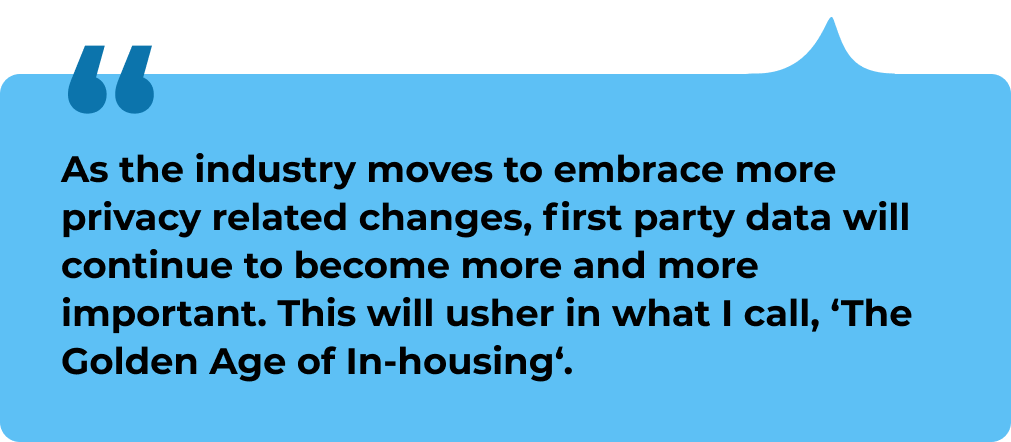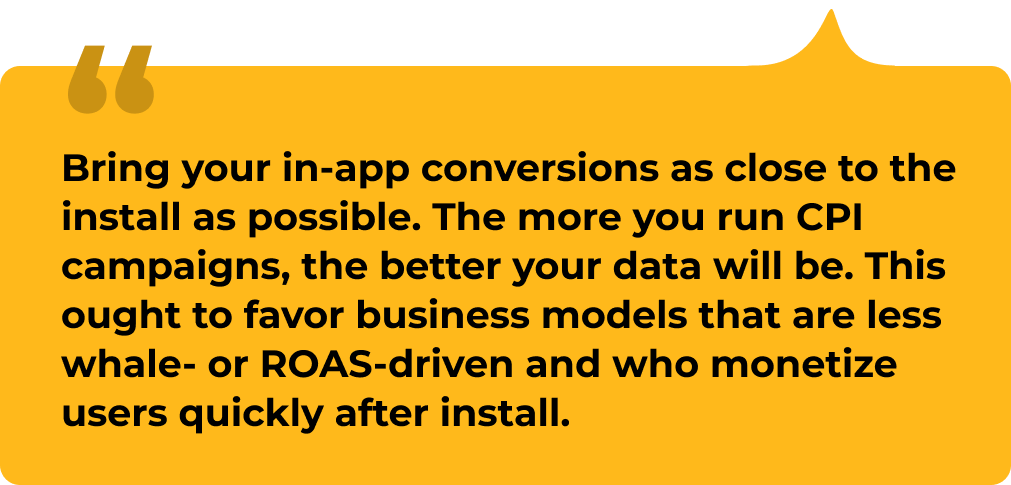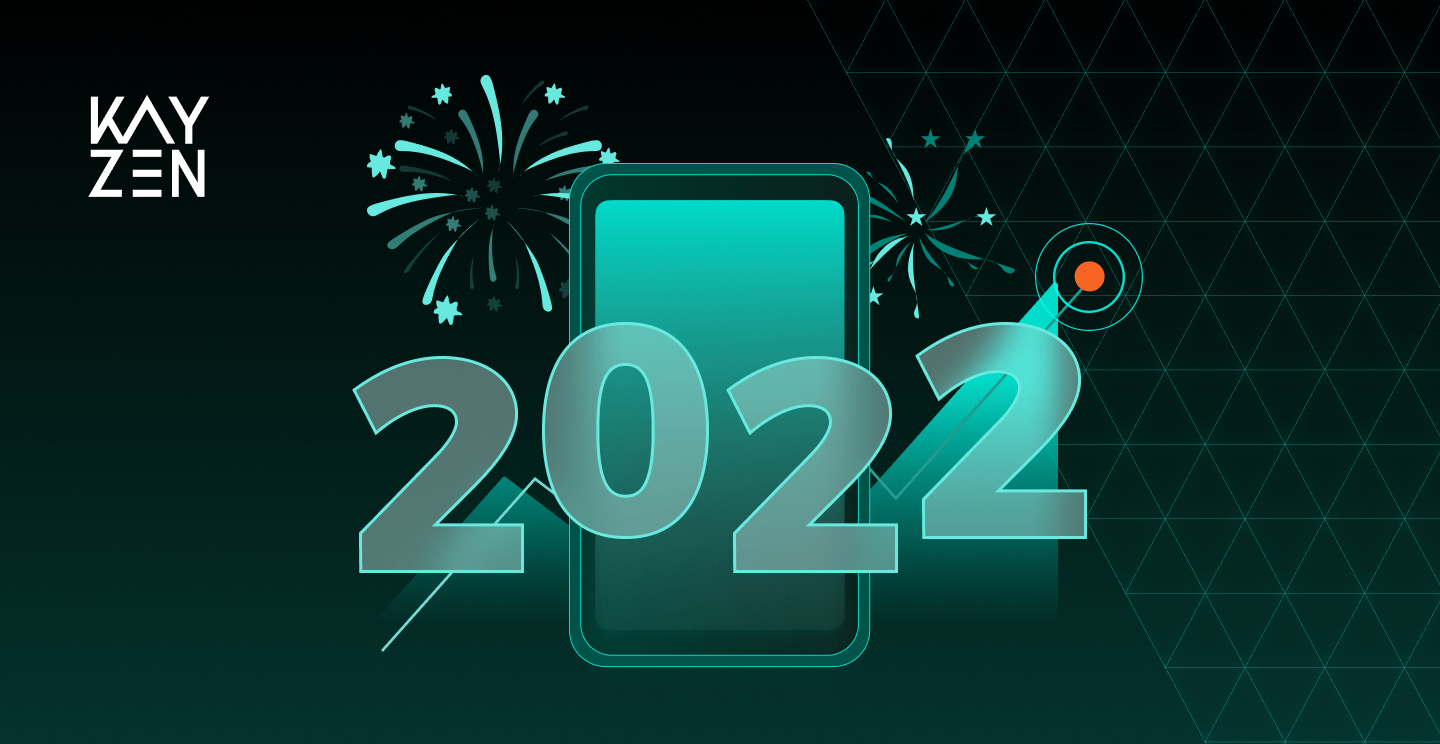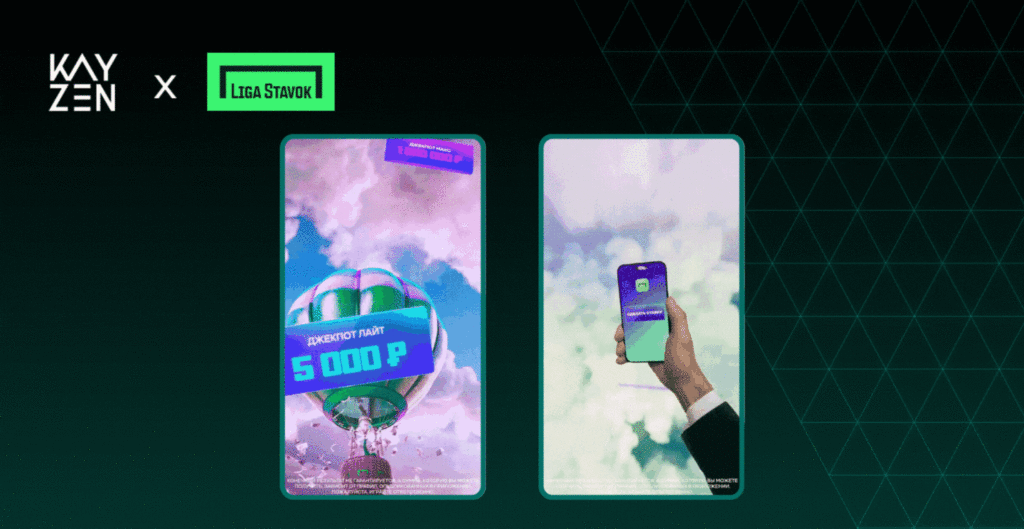A Look Back at 2021 and Mobile Insights for 2022 from the Kayzen Team
In 2021, the mobile marketing industry has been dominated by conversations about Apple’s introduction of ATT and the complete disruption of user acquisition on iOS as we know it. The truth is, a lot happened this year. An industry in flux is a dynamic animal, morphing and changing its shape to meet new demands — and the mobile ad tech industry has been doing just that in 2021.
With that in mind, we asked Kayzen team members from every department to share their thoughts on 2021 and tell us what they have their eye on for 2022. From consolidation among major players in the industry to the way data scientists are changing the way they work in the face of privacy challenges, we take a look back at 2021 and share our thoughts about mobile marketing in 2022.
Michal Lasman, Growth Lead


2021 was a challenging year for mobile marketers, with the need to readjust after a global pandemic changed everything we know about customer behavior and with big changes to iOS 14.5+ that disrupted the industry. Mobile marketers anticipated the worst. Forecasts ranged from utter despair for certain activities, such as retargeting, to a prolonged recovery for other segments — such as UA — due to the new frame of work. While in reality, new solutions and offers emerged that simplified this transition more than expected, allowing the industry to adapt quite quickly. While iOS 14.5+ did require adjustment, the fear of it was much worse than the actual change. Yet the industry is still in a learning process, and we will have to see what 2022 holds.
2021 will be remembered as a year mergers and acquisitions
Industry acquisitions took center stage in 2021, which I believe emphasized the importance of access to cutting-edge technology to gain a competitive advantage. Here‘s a short recap of some of the largest mobile marketing deals that happened in 2021: Digital Turbine acquired Fyber, AdColony and Appreciate. Verve Group acquired Smaato for $170 million, Applovin acquired MoPub from Twitter over $1 Billion, InMobi acquired Appsumer, IronSource acquired TapJoy for about $400 million. The mobile industry puts itself at the forefront of technology and these acquisitions show the direction the industry is marching towards.
After a year defined by big changes, you have to wonder what we should expect in 2022?
It‘s no secret that privacy is getting more and more important to consumers. Apple’s changes are already having an effect on other platforms and operating systems. For instance, Google announced further restrictions on tracking its users’ behavior. We can expect to see more of this, as other platforms are also transitioning to a privacy-centric approach. Clearly, users want more privacy, and the eco-system will adapt accordingly, but as we saw in 2021, marketers are going to develop new strategies to meet their objectives.
Puneet Gupta, CPO & Co-founder


By now, we all know that big talking points in mobile marketing this year were the deprecation of IDFA, the implementation of ATT, and the adoption of SKAdNetwork. I want to focus on what’s coming up next.
As the industry moves to embrace more privacy related changes, first party data will continue to become more and more important. This will enable savvy marketers to take control of their media buying since, for the first time in many years, the information they have about their users (first party data) can supersede the information that third party ad networks/platforms have about advertiser’s data (because of degradation of user device graphs). This massive change has the potential to usher in what I call “The Golden Age of In-housing.” In this new paradigm, we will see an increase in the demand for solutions and products that enable marketers to leverage their first party data in a secure, transparent way to optimize their campaigns.
It will also be interesting to follow what Apple does with user privacy features like Private Relay. Will it be enforced on App Traffic in 2022? How will Apple combat fingerprinting? Will it use tech (Private Relay) or go low-tech with manual store reviews? Or maybe Apple won’t do anything at all!
One of the biggest questions still lingering into 2022 is what Google will do about privacy. At present, Google has followed Apple’s example — albeit a bit slowly (introduction of App Nutrition labels, limiting access to GAID when a user has disabled sharing their advertising ID, etc.). But as privacy concerns continue to mount and Apple continue to drive the narrative, will Google take more action?
And finally, what will consolidation look like in 2022? Will more companies — especially in the gaming sector — look to acquire/invest in ad-tech or will they invest in acquiring more first party assets? Or maybe they will do both!
Heiko Schmidle, Data Scientist Lead


2021 has been very exciting for the ad-tech industry. We have seen a clear shift to limited-ad-tracking and this will fundamentally change how data science teams work with the data at their disposal.
In the following graphic, you can see how the share of bid-requests we received where the user limited their ad tracking on iOS increased throughout 2021. There was a surge in the middle of the year and now more than 70% of bid requests on iOS do not have identifiers present.
The next graphic shows the share of SKAdNetwork support for iOS in 2021. Starting in March we see that the support rapidly increased and included almost 90% of bid requests. These changes force machine learning algorithms to deal with the challenge of non-existent or non-deterministic attribution — the main ingredient in targeted advertising.

Furthermore, 2021 was a year of heavy research. Data science teams have had to develop algorithms to compute exact prices due to the rise of First Price Auctions in 2020 and 2021, which removes the safety net for automated decision making and puts a lot more responsibility on algorithmic pricing. We think that this paradigm shift will lead to the implementation of much more advanced algorithms and teams have to stay on top of current research and cannot rely on established techniques anymore.
In terms of machine learning here‘s what we can expect in 2022
Data-Science teams will have to deal with the increased privacy protection. A very hot topic will be Federate Learning, providing a solution for fully anonymous training of models. Secure Multiparty Computation will become one of the most important techniques and we already see that e.g. Tensorflow Federate provides an open-source solution. The second important topic will be the increasing popularity of ML-Ops.
Traditionally, a data science team is supported by Dev-Ops and data engineering. The toolbox for machine learning and especially real-time machine learning is becoming more and more advanced. This leads to more specialization of team members and technology. I predict that ML-Ops is becoming a separate branch at the intersection of machine learning and Dev-Ops and will become very important for any organization that has algorithms at the core of their product.
Ryan Goeden, Business Development Lead


The biggest mobile marketing news 2021 was obviously ATT and SKAdNetwork which are still developing, and many challenges remain to be solved in 2022. There are some trends, challenges, and opportunities to keep an eye on as we bridge the gap into the new year. Advertisers are still struggling to run successful SKAdNetwork campaigns at scale. Limited in-app conversion data and publisher granularity stands in the way of optimizing campaigns, so a lot of past expertise on iOS has been wiped out. Campaigns are running, but nowhere near at the same scale as pre-ATT.
Probabilistic is still in use but many feel its days are numbered. For the time being, probabilistic data can be used to optimize using the same tactics pre-ATT. It also closes machine learning loops to develop algorithms. Again, this has depressed scale but not eliminated marketing on iOS. Many, however, feel it’s just a matter of time before Apple cracks down on this. They are already limiting it for Facebook and Google, and with consolidation bringing fewer large players in the mobile ad tech space, they could easily start doing it for other vendors.
Additionally, Privacy Threshold has proven to be a challenge, as it removes publisher data from postbacks until at least 30 conversions are met. This means advertisers are limited to knowing about a few well-converting publishers for their campaigns. Some potential workarounds exist, but nothing widespread. Meanwhile, the lack of creative IDs in postbacks means advertisers have to use campaign IDs for creative testing. This limits the number of audience segments and creatives that can be tested and used.
A few tips for turning disadvantages into an advantage in 2022
Don’t try to boil the ocean! Limited publisher granularity means running campaigns across an entire network won’t yield enough data to pass Privacy Threshold. Similarly, testing all of your creatives will require too many campaign IDs and further complicate passing Privacy Threshold.
Leveraging your past data and insights as much as possible can be useful to limit the scope of your campaigns. For example, a well-informed publisher white list will reduce learning costs while increasing the chances that you pass Privacy Threshold. Bring your in-app conversions as close to the install as possible. The more you can run CPI campaigns, the better your data will be. This ought to favor business models that are less whale- or ROAS-driven and who monetize users quickly after install (for example, subscription businesses).
There are a few big questions remaining about SKAdNetwork and attribution as we head into 2022, and the answers ought to have significant ramifications. In the meantime, we’ll all be relearning what it means to market on iOS.
Tomás Yacachury, Strategic Partnerships Lead


If 2021 was ever made into a movie, I’m quite confident that fans of John Carpenter’s “The Thing,” myself included, would love it.
A year marked by unprecedented mergers, acquisitions, and alliances, 2021 closes the year looking significantly different from how it started. From Digital Turbine acquiring AdColony and Fyber, to AppLovin’s bold acquisitions of Adjust and MoPub, the lines between supply, demand and attribution partners are fading by the day.
With great power comes great responsibility, said Peter Parker’s Uncle Ben, and thus, such level of consolidation demands a higher level of transparency in our industry in order to avoid leaving any room for hidden incentives. Time will tell who is up to the task.
But when it comes to supply side trends for 2022, these are some of the things I envision happening:
- In-app bidding adoption will increase to the point where most of the available inventory will be accessible through bidding. While waterfalls and real-time bidders will continue to coexist in a hybrid setup, the vast majority of the impression opportunities will be accessible through, at least, one in-app bidding supply path.
- Driven by the increased consolidation in our industry, publishers will start re-evaluating their legacy monetization solutions. This will create an opportunity for new, more transparent players to gain some momentum, specially SaaS based monetization platforms
- SPO will gain renewed meaning in 2022. With the increased adoption of in-app bidding, there will be more and more overlap between supply partners’ inventory, and as such, the definition of value will shift from reach to efficiency. If we are lucky, supply side platforms will further adopt bidstream signals such as the schain object, while incorporating new ones to properly identify bidding vs. waterfall inventory, allowing buyers to efficiently drive their SPO strategy.
Conclusion
A new year presents new opportunities for mobile marketers. After a year of changes driven by ATT and SKAdNetwork, 2022 is a time for mobile marketers to take control of their campaigns back at every level. From taking control of your data and working with it in new ways to a rise in in-app bidding and changes in monetization strategies, 2022 stands to be a year defined by continued evolution and exciting changes.



